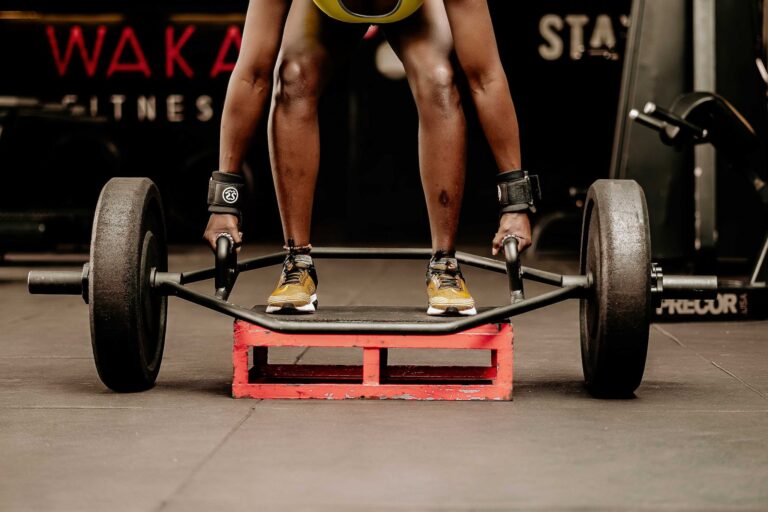
💥 Potential Impact
Training to around 2 reps before complete failure doubled muscle growth compared to always going to failure. But staying 4+ reps away built similar strength as always failing.
🌟 Intro
Finding the right distance from complete failure is key to results.
But should you always go to failure? Or does stopping early work better?
This looked at how many reps “in reserve” (RIR) affects gains in strength and size.
🧩Key Terms
- Reps in reserve (RIR): How many more reps you could’ve done with good form when you stop a set. 0 RIR is complete failure.
- Proximity to failure: How close you train to complete failure, based on RIR left at the end of each set.
📈 Recommendation
For muscle growth, train to around 2 RIR from failure. But for strength, train from 4+ RIR away.
You don’t need failure for max gains.
🎓 What the Research Found
- For size, gains grew faster as sets got closer to failure. Sets at 2 RIR doubled muscle growth compared to always failing.
- For strength, gains were similar whether you fail or stay 4+ RIR away. Proximity didn’t affect strength much.
- Heavier weights need less proximity. But light weights need very close proximity for max growth.
🧠 Why It Works This Way
- More muscle fibers activate as you near failure, driving growth. But excessive failure fatigue may limit gains.
- Strength depends more on force produced, not fiber activation. So proximity doesn’t impact it as much.
✋ Limitations
Proximity was estimated not measured directly. Recommendations may differ individually.
🌍 Real World Examples
- A bodybuilder using light weights like 60% 1RM on squats would squat to 2 RIR for optimal growth.
- A powerlifter lifting heavy like 90% 1RM on deadlifts can stop at 5 RIR and still gain max strength.

⚡ How to Apply This
- Pick your goal: strength or muscle growth?
- Choose the right weight for your goal. Lighter loads for growth, heavier for strength.
- Stop sets at the recommended RIR for your goal. 2 RIR for size, 4+ RIR for strength.
- Track RIR by rating remaining reps after each set.
- Adjust proximity over time based on your results.
Behind the Research
🔬 Type of Study: Meta-analysis of 55 studies on proximity to failure and strength/size
🔗 Link to Original Paper: Exploring the Dose-Response Relationship Between Estimated Resistance Training Proximity to Failure, Strength Gain, and Muscle Hypertrophy : A Series of Meta-Regressions | SportRxiv
👨🔬 Authors: Robinson et al., Florida Atlantic University
🔍 Key Research Insights
| Finding | What It Means | Example |
|---|---|---|
| 2 reps in reserve doubled muscle growth | More fibers recruited closer to failure, but complete failure may limit gains | If you can do 10 reps to failure, stopping at 8 reps would provide better muscle growth |
| Gains were similar 4+ reps in reserve from failure | Strength relies more on force produced per rep than fiber recruitment | Whether you fail at 10 reps or stop at 6, strength gains would be similar |
| Heavier loads needed less proximity to optimize growth | Lighter loads need to get super close to failure because fewer fibers are recruited | If lifting light, train to 2 reps in reserve for growth. If lifting heavy, 4 reps in reserve is enough |
| Proximity to failure had little impact on strength gains | Many factors affect strength, but proximity to failure wasn’t very impactful | Whether you train to failure or 6 reps in reserve away, strength gains were comparable |
| Slope for proximity to failure-muscle growth was negative | As sets get closer to failure, muscle growth improves in a curved, not straight way | Growth improves faster as you get closer to failure in a curve, not linear way |
❓ FAQs
Q1: How many reps in reserve should I aim for if my goal is muscle growth?
- A: Based on this research, aiming for around 2 reps in reserve is optimal for maximizing muscle growth. Leaving 2 reps in the tank doubled muscle gains compared to always training to complete failure.
Q2: Could the methodology of estimating reps in reserve impact the results?
- A: Yes, since reps in reserve weren’t directly measured, the accuracy of the estimations could influence findings. But the large sample size and using objective calculations increase confidence. Directly quantifying reps in reserve in future studies is ideal.
Q3: How can I start applying reps in reserve to my own training?
- A: First, identify your goal – muscle growth vs strength. Then track your reps in reserve each set by rating how many more you think you could have done. Over time, adjust your proximity to failure to align with the recommendations for optimal results.
Q4: Does failure increase injury risk?
- A: Possibly, as it causes more fatigue. But managing weights, volume, and rest can help prevent this.
Q5: Should I fail on all sets or just some?
- A: Varying proximity can control fatigue. Go closer on early sets and farther on later ones.
Q6: How do I know my true RIR if I misjudge sometimes?
- A: Tracking RIR helps improve judging ability over time. Dropsets also help calibrate failure sensations.
Q7: Why does getting too close to failure seem to limit muscle gains?
- A: Training extremely close to failure recruits lots of muscle fibers, but also causes significant fatigue. This accumulation of metabolic byproducts and central nervous system demand likely interferes with the cellular signals driving long-term muscle growth. Leaving a few reps in reserve avoids this excessive fatigue.
Q8: How does number of hard sets factor into these proximity to failure recommendations?
- A: This analysis focused specifically on proximity to failure for given volumes. But hard set count also influences muscle growth, likely through accumulating mechanical tension. Aiming for the ideal reps in reserve within your target hard set range per muscle is recommended.
📚 References
Robinson, Zac & Pelland, Joshua & Remmert, Jacob & Refalo, Martin & Jukic, Ivan & Steele, James & Zourdos, Michael. (2023). Exploring the Dose-Response Relationship Between Estimated Resistance Training Proximity to Failure, Strength Gain, and Muscle Hypertrophy: A Series of Meta-Regressions. 10.51224/SRXIV.295.
✨ Final Thoughts
Using these tips could help optimize your strength and muscle gains from training. But don’t be afraid to try out what proximity works best for you! Getting a feel for different reps in reserve ranges and how your body responds is key. Effort and consistency still matter most!
💪 What’s been your experience with failure vs stopping short? Let me know in the comments!
🔍 Study Summary
| Finding | What it Means |
|---|---|
| 2 RIR doubled muscle growth | More fibers activate closer to failure but excessive failure may limit gains |
| 4+ RIR had similar strength | Strength relies more on force produced than fiber activation |
| Lighter loads need very close proximity | Heavier loads require less proximity for max growth |







